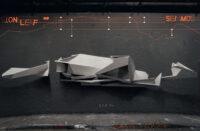
(01.09.06) While it hasn’t been celebrated in the last few years, there was
enough of a resurgence on the FAX label mailing list about
International FAX Day this year that I stacked up a number of the
recent releases from the label which I hadn’t gotten around to
listening to yet and set myself up for a full day of FAX. The first
Thursday of the new year (01.05.06) has been traditionally (loosely so, we’ve
been negligent these last few years) set aside as a day where we
celebrate the twelve years that Peter Kuhlmann (aka Pete Namlook) has
been releasing records. Built around three (relatively) distinct
sub-labels, FAX is home to some of the most fascinating and
collectible ambient, chill, dance, ethnic, and experimental electronic
music being produced. With more than two hundred releases (in
editions that range from 500 to 3000 units), there’s a lot of material
to consider — more than you can fit in a single day — and
International FAX Day is simply an opportunity for us FAX-heads to
gather together a handful of our favorites. So, in celebration of
Namlook’s decade plus of making interesting music, here’s what spun in
my CD player this year.
::..:::…..:..::….:::::..:::..:::::::……:::…::.:::….::::..:..:::…::…….:::::
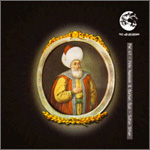
(PETER NAMLOOK AND BURHAN ÖÇAL :: Sultan Orhan CD) After a two minute intro of metallic noises, the Turkish percussion
kicks in and transports us to the hazy streets of Constantinople where
drums and pipes compete across a terrain of electronic tones. Billed
as a sequence of records extolling the magnificence of the Ottoman
Empire, Sultan Orhan is the third in the series of
collaborations between percussionist Öçal and Namlook.
While Namlook provides an electronic framework (build from a
foundation of analog equipment which provides a rich organic feeling
to these elements), the majority of the record focuses on
Öçal’s compositions and traditional instrumentation.
“Nerden Geliyorsun Part I” (the record is a seven-part suite charting
the life of Sultan Orhan) is filled with the rhythmic language of the
kettledrum and Öçal’s rich voice. “Part II” is Byzantine
dance music, filled with the heady stringed sound of the oud and
tanbur against a pulsating background of hand drums and finger
cymbals.
“Part IV” vanishes into a haze of hashish, a historical journey
narrated by Öçal through a fog of electronic elements and
distant metallic percussion. Sounding like something Bill Laswell
would have curated for one of his spoken word projects on Sub Rosa,
“Part IV” is the whispered secret history of the past, reverberant
with a thousand years of percussive echoes. “Part V” is a brief oud
solo, a lament for the passing of the Sultan, before the final two
parts of “Nerden Geliyorsun” which are a focused celebration of
Öçal’s vocals and percussion. Sultan Orhan is
classified as “ethno-electronic,” but Namlook’s subtle engineering
leave the spotlight fully upon Öçal and his bevy of native
and traditional instruments. It’s a departure for FAX, a pulsating
vision of a native history that has very few electronic elements but
which captivates through its historical use of ritual rhythms and
trance-like musical loops — effects used endlessly in modern
electronic composition without the same heart and passion as heard
here. Still one of my favorite FAX records. Great way to start the
day.
::..:::…..:..::….:::::..:::..:::::::……:::…::.:::….::::..:..:::…::…….:::::
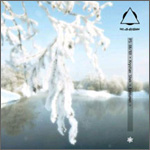
(KRYSTIAN SHEK :: Eisblumen CD) The PS sub-label is generally reserved for releases which are done by
artists other than Namlook (as compared to the PK sub-label which is
strictly his work and his regular collaborators and the PW sub-label
which generally pairs him off with a collaborator who isn’t
necessarily based in Germany — the above mentioned collaboration with
Burhan Öçal, for example). For a number of years, the PS
sub-label (notice the difference in the logo in the upper right hand
corner of the cover) lay fallow as the regulars of this subdivision
(Jochem Paap, Wolfgang Spyra, Tetsu Inoue, Atomtm to name a
few) found themselves drifting off to other labels. Recently, there
has been a rekindling of the fires over here with an influx of new
blood. One of which is Krystian Shek’s Eisblumen record.
A reflection of Shek’s wintertime journey from Moscow to St.
Petersburg, Eisblumen is an environmental ambient trance
journey from within the heart of the new Russian electronic movement.
Reminiscent of winter in the same way that Peter Benisch’s Waiting
For Snow was, Eisblumen flirts with techno beats and
breathy glitch while dropping dappled lines of space music melodies as
if recreating the early 80s era of synthesizer music over a throbbing
bed of peripheral BPM. “Tannenwald” throbs with that techno pulse, a
Ken Ishii style persistence that sticks in the back of your throat,
but keeps it all at arm’s length, pushing the beats towards minimalism
but keeping them close enough to warm your blood. The beats shuffle a
bit in “Abendrot,” playing counterpoint to a chiming synthesizer
melody of slow sparks like the cold light off a winter landscape.
“November” bristles with freezing temperatures, leaving a bit of
brittle snap on the beats, while “Wake Up With The Rain” hiccups and
gurgles like water in old pipes that is sluggishly moving behind the
walls. Beats patter and ring against the windowpane like the
temperamental winter rain which isn’t so frozen to be snow but is
still cold enough to rattle hard against the glass.
One of my favorites, “The Girl From Uzbekistan,” begins with bird song
and the ripple of water — a brief flash of spring within the icy
confines of Eisblumen as if the sight of this girl generates
such a rush of warm that the birds come back. “The Girl From
Uzbekistan” builds Kompakt-style from small elements — little bits of
glitch and hiccups of sound — into a seamless structure of light and
grace, filled with pulsating rhythm and recurrent motifs. Right at
the heart of the song, it all drops away into a moment sustained
choral hum and, just for a second, you can hear the birds again.
Then: the rhythms return, squiggling and churning like the
kaleidoscopic motion of thousand prisms.
“Nuclear Island” whispers with the magnetic ghosts of lost tape loops
and the night-time cry of radiated blackbirds and dissolves into an
neu-organic ambience that sounds like the steam-driven breath of old
machinery and tired air circulation systems. Shek populates this
ambience with more of the bird cries, a hint of radio transmissions
and a phantasmal glitch beat. This ambient wasteland segues into
“Night vs Day” which picks up the last train out of town, riding hard
rails away from the desolate ghost town of irradiated machinery back
towards civilization where the persistent techno beats live. (Buy it at Amazon.com)
::..:::…..:..::….:::::..:::..:::::::……:::…::.:::….::::..:..:::…::…….:::::
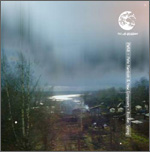
(PETE NAMLOOK & NEW COMPOSERS :: Russian Spring CD) So I stick around in Russia for the spring with the second
collaboration between Pete Namlook and the St. Petersburg-based New
Composers collective. Similar to The KLF’s Chill Out record in
intent, Russian Spring wanders through the Russian landscape
searching for spring with a flatbed full of electronic gear to
generate swoops, whistles, drones and tones while the sound engineer
gathers the sound of crunching snow underfoot, the chirp of returning
birds and the subtle groan of the permafrost as it settles and creaks.
A voice intones the secret of Russian Spring in “Part II,”
telling us about the hidden strength of the Russian spirit that lies
dormant in the winter but which blossoms into its limitless freedom in
the spring. As water begins to break through the ice on the rivers
and percolates through the frigid hills in the successive parts of the
suite, ambient tones and field recordings of insects begin to build a
cathedral of sound, a limitless architecture of synthetic tonal
melodies and bird song. A guitar gently wafts over slumbering drones
in “Part VI” as a melancholic elegy for the death of winter and the
resurrection of the spring flowers and green leaves. While “Part VII”
froths in an electronic rendition of a new waterfall spilling down a
boggy hillside, “Part VIII” tap-dances through a cold morning mist,
its footsteps light against the dull earth while swathes of tingling
mist swirls about the listener.
There is a great deal of mystery in the Russian woods as piano
melodies surface through foggy drones and guitar tones elongate like
spirit ectoplasm into gossamer threads of sound. The melodies linger
in these white-out conditions, hanging in space as if suspended by the
very gravid weight of the air around them, as if the fog has enough
substance to hold music aloft. A combination of elegiac guitar
introspection and Vangelis-style synthesizer modulation drifts in
timeless circles as if the whole world were waiting for the ground to
warm up enough to melt away the snow and mist.
::..:::…..:..::….:::::..:::..:::::::……:::…::.:::….::::..:..:::…::…….:::::
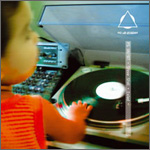
(STEVE STOLL :: Exiled CD) Steve Stoll collaborated on a one record with Namlook back in the
early days of the label before spending the intervening decade working
on minimal techno 12″ releases. He’s come back to FAX in the new
millennium and Exiled in his third release on the label in the
last two years. A snapshot of where his head currently is,
Exiled is a record built in isolation, a headspace where Stoll
is focused solely on his computer and is cut off from outside
influences. “When we are alone,” he says about the record, “we are
free to find our true self.” If Exiled is the running
soundtrack of self-exploration, then it sounds like Stoll is
undertaking a bit of an action film in his head.
His techno has bite, solid BPM foundations which make it sound like
mechanical clockwork — persistent pacing that regulates your
heartbeat and gets the blood flowing in your veins (even makes me type
faster). “Exiled,” with a recursive note behind the banging echo of
the beats, sounds more like pursuit than retreat, the siren note a
haunting wail that makes me think of chase cars on the horizon and not
enough time to finish this sentence…The misnomer of “My Dying
Machines” is that his rhythms are near perpetual motion while “A or N”
tracks with such fusion that I really do feel like I’m smack in the
middle of a Jerry Bruckheimer production.
It’s quite the banging record, filled with all manner of techno
rhythms, a great drive time record, sure to make those miles vanish
quickly, and Stoll keeps the tracks short and punchy, never falling
into the mindless techno drone where the rhythms go on forever. He
gets in, does his bit, and gets out, leaving you with a pulse you want
to remember instead of one you can wait to forget.
Stoll’s penchant for minimal elements keeps the material interesting
and innovative. “Small Ink” slides into your head like a bit of black
oil laid on your tongue and allowed to slither down into your stomach
where it sets up a pulse in your intestinal track. “New Life” pops
and crackles with a heavy step, a floor-shaker that isn’t in any rush
and, dappling in its wake, is a series of tiny synthesizer melodies
like butterflies caught in the upper branches of a massive Ent
boom-booming through the woods.
::..:::…..:..::….:::::..:::..:::::::……:::…::.:::….::::..:..:::…::…….:::::
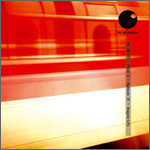
(PETE NAMLOOK & MOVE D :: Wagons-Lits CD) The David Moufang (Move D) and Namlook collaborations have been a
mainstay of the label for most of its existence (this is their ninth
as hushed voices woven into the mix tell us), and the two of have done
everything from ambient to environmental chill to trance to nu-jazz to
boudoir love muzak. Wagons-Lits was recorded live at Moufang’s
Heidelberg studio — the direct-to-tape compositional method is one
used regularly by the pair — and the theme for this session was the
idea of travel. Wagons-Lits is chill-out music for travelers,
the sort of thing you put on your headphones as you settle back in
your train car and wait for the carriage to leave the station. After
the perpetual motion machine of Stoll’s Exiled, I ready to end
my FAX day with some calming headphone music.
Wagons-Lits is five tracks and is just about an hour’s journey
(ending with the twenty minute “Lastec”). This is emblematic of the
history of FAX records: long tracks which grow organically, finding
natural pathways through your neural nets, and decay gradually as the
slow death of the motifs and melodies drains away in your brain.
“Voiture 21,” the first of three window scenes that make up the
majority of the record, unwinds slowly like flashes of light past your
seat. Synthesizer tones squeal and bleep past at varying speeds like
trailing lights of passing trains and it is a good four minutes into
the track before the beats clip-clop beneath glowing drone tones.
“Voiture 22” continues the mood of the preceding track, adding
Matrix-style atmospheric noises (you know, that glassine sound they
made as they slid through the virtual reality world — The
Matrix is never far from Namlook’s sound palette), sizzling static
at the periphery of your hearing and squelchy glitch mutterings which
chase away the Dopplering drone tones. Manipulated voices wander
into the mix, subliminal suggestions which remind you to put the cat
out, bundle up the trash and make a sandwich for the trip. No,
actually, it’s Dave and Peter reminding you that this is their ninth
collaboration and that you should enjoy their live recording — rather
mundane sort of material to slip into the mix and so I’m just blocking
it out and pretending it is actually something more interesting than
it is. It’s an unfortunate choice on their part as it disturbs the
tranquility of the track with seemingly pointless studio chatter,
detracting us from our mental peregrinations. Thankfully the voices
become distorted mutters which creep through the mix like old whales
beneath the active surface as “Voiture 22” drifts into “Voiture 23,” a
gradual fade-out that picks up some lounge piano drifting about the
ether as it disappears into nothingness.
The twenty minute “Lastec” begins with a minimal techno rhythm,
recreated as a fuzzy reverberation beneath a winsome melody of plush
tones. It’s an aquatic rhythm reminiscent of the shuffling deep water
pulsations of Symbiotics, Porter Rick’s and Techno Animal’s
collaboration from a few years back (okay, like six years ago, but,
still, great record). The rhythms increase in complexity as the
drifting tones — luminescent sea creatures floating in the
thermocline — perform an elaborate slow-motion dance.
Moufang and Namlook touch on a number of recent musical trends over
the hour of Wagons-Lits — aquatic dub, minimal techno,
elaborate space music, distorted vocal ephemera, and click track house
rhythms — without seeming to be pale imitators. They’re still
experimenting with the sounds of the 21st century, making interesting
head trips. The label is still vibrant, still energetic and topical.
Which is why we celebrate its existence once a year. Happy
International FAX Day.
::..:::…..:..::….:::::..:::..:::::::……:::…::.:::….::::..:..:::…::…….:::::
For more information about FAX, visit their website here.








